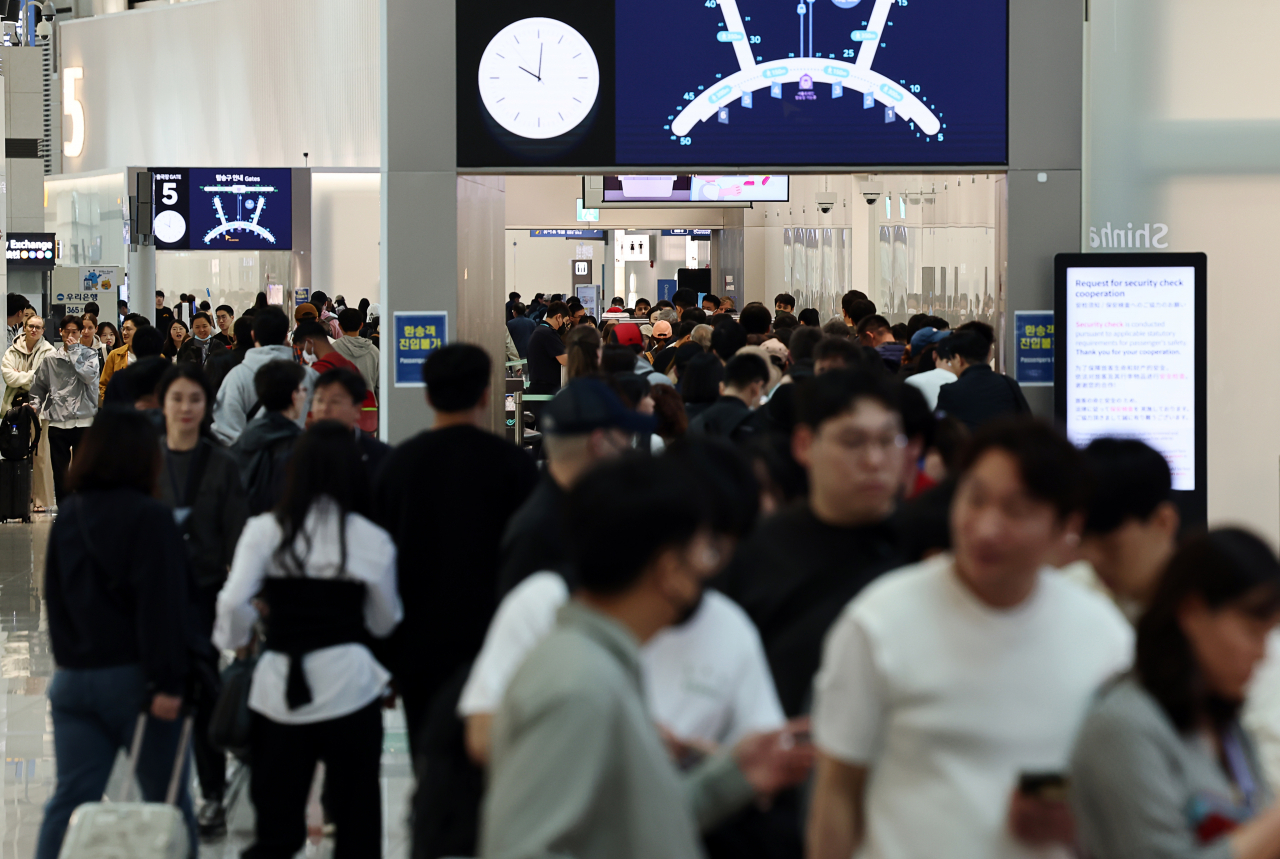 |
This photo shows the crowd at Incheon International Airport on May 4. (Yonhap) |
South Korea's travel trade balance deficit widened to a three-year high in the first quarter of 2023, as the number of Koreans departing for overseas travel surged amid eased COVID-19 restrictions.
According to numbers from the Bank of Korea on Tuesday, the country's travel trade balance marked a $3.23 billion deficit in the first three months of the year, with travel revenue coming in at $3.08 billion and expenditure at $6.32 billion.
The figure hit its highest level since it stood at $3.28 billion in the third quarter of 2019. For the first quarter of any year, it was the largest deficit in five years since the $5.31 billion deficit recorded in 2018.
The figures show that Korea’s travel trade deficit recovered to a pre-pandemic level, as related restrictions have been lifted.
The quarterly travel deficit, which reached $2.93 billion in the fourth quarter of 2019, fell to $1.99 billion in the first quarter and $920 million in the second quarter of the following year. The drops came amid travel bans and closed borders around the world in response to the COVID-19 pandemic.
A large part of the worsened deficit in the first quarter stemmed from an increase in Koreans traveling for purposes other than overseas education and training.
The deficit in the overseas education and training balance increased by 5.2 percent on-quarter to $650 million, while the tourism balance deficit widened by 46.8 percent to $2.58 billion.
More Koreans are departing overseas for recreational travel.
According to the BOK, the number of outbound tourists in Korea was tallied at 4.98 million in the first quarter, marking a 11-fold increase from the 410,000 in the same period of 2022.
However, the number of inbound tourists in Korea is slow to grow, as Chinese group tourists, who take up a major part of the local tourism industry, are yet to fully return to Korea.
Though China reopened up the borders in January after wrapping up the era of zero-COVID policy with tightened restrictions, overseas tourism is slow to recover. The Chinese government has yet to allow group tours to Korea.
According to the Korea Tourism Organization, 105,967 Chinese visitors came to Korea in April. Though this marks a sharp increase from the 24,946 in January, the figure remains relatively low as in 2019, the monthly average of Chinese visitors in Korea was roughly 400,000.
While the number of foreign tourists in Korea made a 55 percent recovery in April compared to that of the same month in 2019 before the pandemic, Chinese tourists recovered by only 24 percent.
The worsening travel balance has been affecting the South Korean economy overall.
South Korea’s current account balance in the first three months of 2023 posted a deficit for the first time in 11 years. Behind the deficit are slow exports, a slump in the global chip industry as well as a service account deficit of $1.9 billion, which was led by a fall in the country’s travel balance.
The Hyundai Research Institute called for measures to encourage the recovery of the tourism industry, suggesting the travel deficit will worsen throughout the year.
"The worsened service account balance deficit is likely to lead the fall in the trade account balance this year," the institute said through a report published in April.






![[Today’s K-pop] Blackpink’s Jennie, Lisa invited to Coachella as solo acts](http://res.heraldm.com/phpwas/restmb_idxmake.php?idx=644&simg=/content/image/2024/11/21/20241121050099_0.jpg)
